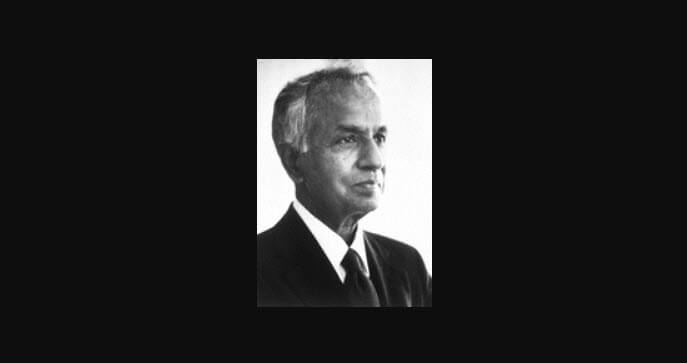Who was Subrahmanyan Chandrasekhar and what did he do? Information about Subrahmanyan Chandrasekhar biography, life story, works, contributions to science and awards.

Subrahmanyan Chandrasekhar (1910-1995)
Subrahmanyan Chandrasekhar, often referred to as Chandra, was a distinguished astrophysicist known for his groundbreaking work on the evolutionary stages of massive stars. Born on October 19, 1910, in Lahore, British India (now in Pakistan), Chandrasekhar hailed from a Tamil family with a strong academic background.
Education:
Chandrasekhar completed his undergraduate studies at the Presidency College in Chennai, India. Inspired by his passion for astrophysics, he secured a government scholarship to pursue graduate studies at the University of Cambridge in England. There, he worked under the guidance of the renowned astrophysicist Sir Arthur Eddington.
Major Contributions of Subrahmanyan Chandrasekhar:
- Chandrasekhar Limit:
- The Chandrasekhar Limit is one of his most recognized contributions to astrophysics. During his journey to England for further studies, he began contemplating the final stages of stellar evolution.
- Chandrasekhar theorized that there is a maximum mass (approximately 1.44 solar masses) beyond which a white dwarf star cannot remain stable and would undergo gravitational collapse. This value is now universally referred to as the “Chandrasekhar Limit”.
- This discovery was initially met with skepticism, especially from his mentor, Sir Arthur Eddington. However, subsequent research and observations confirmed his predictions.
- The significance of this limit lies in its implications: stars with masses below this threshold end their lifetimes as white dwarfs, while those with masses above it can potentially become neutron stars or black holes.
- Stellar Dynamics:
- Chandrasekhar made pioneering contributions to the understanding of stellar dynamics, which is the study of the collective motion of stars within galaxies.
- He developed mathematical models to describe the equilibrium and stability of stars and explored the dynamics of star clusters. His work laid the foundation for subsequent studies on the movement and interaction of stars within galaxies.
- Radiative Transfer:
- Chandrasekhar’s work on the theory of radiative transfer has been fundamental for astrophysics. This theory describes how radiation (like light) interacts with matter and how it’s absorbed, emitted, or scattered.
- His insights in this area are crucial for understanding the atmospheres of stars, the behavior of photons in various media, and the luminosity and temperature of celestial bodies.
- Hydrodynamic and Hydromagnetic Stability:
- He explored the stability conditions of fluid flows, both when affected by gravity and magnetic fields. This work is essential in understanding various astrophysical phenomena, from the formation of stars to the behavior of interstellar medium.
- Chandrasekhar’s studies in this area provided a deeper understanding of how fluids behave under different conditions, which has applications in both astrophysics and other branches of physics.
- Black Holes:
- In the later stages of his career, Chandrasekhar delved into the intricate mathematical theory surrounding black holes. He explored their properties, structure, and the physical processes occurring near them.
- His comprehensive account on the subject has helped shape the modern understanding of these enigmatic celestial objects.
Awards and Honors:
Throughout his illustrious career, Chandrasekhar received numerous awards. The most notable among these is the Nobel Prize in Physics in 1983, which he shared with William A. Fowler for their studies related to the physical processes of importance to the structure and evolution of stars.
Later Life:
Chandrasekhar spent most of his professional life at the University of Chicago, where he conducted research, taught, and authored several books. He passed away on August 21, 1995, leaving behind a legacy that continues to inspire generations of astrophysicists.